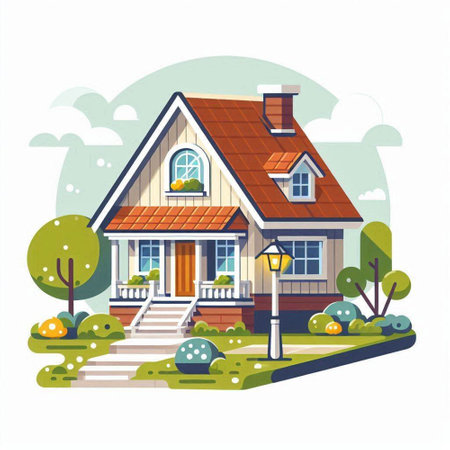Understanding the Allotment Shed’s Purpose
In every British allotment, the humble shed is far more than just a place to stash muddy boots or rusty spades. It’s the very heart of the plot—a sanctuary from the drizzle, a storage hub for precious tools, and often, the setting for a much-needed tea break after a hard morning’s digging. For generations, sheds have served as both practical workspaces and cosy retreats, reflecting the unique culture of British gardening. Designing the perfect small allotment shed means appreciating these traditions while thinking cleverly about space management. Whether you’re storing seed trays and compost or hanging up your battered flat cap, every square inch matters. A thoughtfully planned shed isn’t just about fitting everything in; it’s about creating an efficient, comfortable space where you can work, relax, and enjoy the simple pleasures of allotment life—just like grandad always said: “A tidy shed makes for a tidy mind.”
2. Maximising Limited Space: British Tricks for Clever Storage
When you step into a traditional British allotment shed, you soon realise that every square inch counts. The key to making the most of a small space lies in embracing the art of clever storage—a skill honed by generations of thrifty gardeners across the UK. Let’s delve into some time-tested British tricks for squeezing maximum utility out of even the tiniest sheds.
Vertical Shelving: Making Walls Work Harder
One classic British solution is to look up—not out. Vertical shelving allows you to store tools, seeds, pots, and odds and ends along the walls, freeing up valuable floor space for movement or larger items. Adjustable shelves make it easy to customise storage as your needs change through the seasons.
Stacking and Nesting: Layer Like a Local
Brits are no strangers to stacking—whether it’s crates of potatoes or layers of seed trays. Nesting smaller containers inside larger ones minimises clutter, while stackable bins keep everything within arm’s reach without encroaching on precious room.
Creative Reuse: Nothing Goes to Waste
Perhaps the most quintessentially British trick is creative reuse. Old jam jars become nail organisers; broken teapots find new life as twine holders; battered biscuit tins hold plant labels or spare screws. This knack for breathing new purpose into everyday items isn’t just charming—it saves money and keeps clutter at bay.
British Space Management Techniques at a Glance
| Technique | Description | Typical Uses |
|---|---|---|
| Vertical Shelving | Install shelves high up on walls to utilise vertical space. | Tools, seed packets, small pots |
| Stacking/Nesting | Place items within or on top of each other to reduce footprint. | Storage bins, trays, crates |
| Creative Reuse | Repurpose household items for shed storage solutions. | Biscuit tins, jam jars, old mugs |
The heart of a well-designed allotment shed lies in its ability to stay organised despite its size. With these classic British techniques—vertical shelving, stacking, nesting, and creative reuse—you’ll ensure every inch of your compact shed serves its purpose all year round.

3. Choosing Materials that Stand the British Weather
If you’ve ever tended a British allotment, you’ll know our weather is famously unpredictable – one moment of sunshine swiftly followed by a drenching rain. When it comes to designing the perfect small shed, the choice of materials can make all the difference between a lasting retreat and a dilapidated eyesore. Here’s what you need to know about picking materials that go the distance in our unique climate.
Timber: The Heart of a Traditional Shed
Timber remains the most popular choice for allotment sheds across the UK, but not all wood is created equal. Opt for pressure-treated softwood like pine or spruce, which resists rot far better than untreated options. If your budget allows, hardwoods such as oak or larch are naturally durable and age gracefully, though they’re more costly. Always check for FSC certification – it’s kinder to the environment and ensures good forestry practice.
Roofing: Keeping the Rain at Bay
A leaky roof is every gardener’s nightmare, so choose your roofing wisely. Felt remains an affordable classic and is easy to fit on smaller sheds, but modern alternatives like corrugated bitumen sheets or lightweight metal panels offer greater longevity and superior water resistance. For those who love tradition with a twist, clay tiles add character but require a sturdy frame.
Waterproofing & Damp-Proofing Solutions
Even the best timber needs protection from our relentless drizzle. Treat exterior wood annually with a high-quality waterproof stain or oil; these penetrate deep and help prevent swelling or warping. Ensure your shed sits on raised bearers or concrete blocks to keep floorboards dry and discourage damp rising from the soil – a simple trick many old hands swear by. Lastly, good ventilation (such as air bricks or discreet vents) will stop condensation building up inside, preserving both tools and timber for years to come.
With these time-tested material choices and maintenance tricks, your small allotment shed will stand proudly against whatever British weather throws at it – just as generations of gardeners before us have done.
4. Multi-Functional Features for Everyday Use
If you’ve ever spent a drizzly British morning rummaging through your allotment shed, you’ll know just how valuable every square inch can be. Over the years, I’ve learned that the key to a practical and pleasant shed lies in making each element serve more than one purpose. Let’s explore some classic multi-functional design tricks that will transform even the tiniest garden retreat into a versatile haven for both work and leisure.
Smart Space-Saving Solutions
In true British fashion, we’re experts at making do and getting creative with limited space. Why not consider a potting bench that doubles as your lunch table? After all, nothing beats enjoying a cup of tea or a sandwich while surrounded by your hard-earned blooms. Here’s how you might combine features without compromising comfort:
| Feature | Main Function | Secondary Use |
|---|---|---|
| Potting Bench/Table | Planting & Potting | Lunch & Tea Breaks |
| Shoe Rack | Storage for Wellies | Drying Spot for Wet Footwear |
| Wall Hooks | Hanging Tools | Coats, Scarves, and Hats Storage |
| Fold-Down Shelf | Extra Work Surface | Slimline Dining Table or Book Rest |
| Baskets & Crates | Organising Seeds/Produce | Tidy Up Odds and Ends |
Clever Storage: A Place for Everything
The unpredictable British weather means muddy wellies and damp coats are part of allotment life. Install a sturdy shoe rack near the entrance and some wall-mounted hooks to keep your gear organised—nothing worse than hunting for your favourite spade in a cluttered corner! Don’t forget to add shelving above head height for items you use less often; it keeps the floor clear and maximises vertical space.
A Home from Home: Comfort Meets Utility
Your shed should be more than just storage—it’s your sanctuary after a long day’s digging. By integrating these multi-purpose features, you’ll find it easier to keep things tidy, efficient, and welcoming. From sipping tea at your potting bench to finding your tools right where you left them, thoughtful design makes every visit to your allotment shed a pleasure.
5. Personal Touches: Bringing Character to Your Shed
If there’s one thing British gardeners know, it’s that an allotment shed is far more than a place to stash tools and seed packets; it becomes a cherished little haven, brimming with personality. Adding personal touches is where practicality meets pleasure, and it’s how the humble shed transforms into a real extension of home. Step onto any British allotment site and you’ll spot colourful bunting fluttering in the breeze—simple fabric triangles strung across the doorway or under the eaves, instantly brightening even the greyest day. This playful tradition isn’t just about decoration; it’s a small celebration of your patch of earth.
Many veteran allotmenteers hang up weathered wooden signs, each bearing witty names or heartfelt welcomes. Whether it’s “Dad’s Den,” “Nana’s Nook,” or a nod to classic British humour with something like “The Potting Palace,” these signs tell stories and spark friendly conversation among neighbours. Inside, cushions rescued from a retiring sofa, a battered armchair inherited from a relative, or an old tartan blanket draped over a bench all contribute to a sense of comfort. These are not just practical additions for tea breaks—they’re gentle reminders that this space is yours alone.
Some go further, displaying trinkets collected over years: mismatched mugs hanging on hooks, enamel teapots perched on shelves, or even little radios tuned to BBC Radio 4 as they potter about. It’s these thoughtful details that make the shed inviting after a long afternoon in the soil, turning it into a sanctuary to retreat from the elements or enjoy a quiet cuppa while rain patters on the roof.
No two sheds are ever alike because no two gardeners are alike. That’s the beauty of the British approach—embracing individuality while making do and mending with what’s at hand. The result? A shed that doesn’t just serve its purpose but reflects its owner’s journey and spirit—a true testament to resourcefulness and charm found in every corner of British gardening culture.
6. Security and Neighbourliness: Keeping the Community in Mind
If you’ve spent any time on a British allotment, you’ll know it’s more than just a patch of land—it’s a slice of community life. When designing your perfect small shed, it’s crucial to balance practicality with respect for these shared values. Security is paramount, but so is maintaining good relations with fellow plot holders. First, opt for robust locks and discreet security measures like window shutters or frosted glass to prevent opportunistic theft—shed break-ins are an age-old tale on UK allotments. Avoid ostentatious alarms that might disturb the peace or draw unwanted attention; instead, focus on subtle deterrents and keeping valuables out of sight. Next, consider the shed’s position and appearance. Low-profile colours like heritage green or slate grey help your shed blend into the landscape and avoid overshadowing neighbouring plots. Keep pathways clear and don’t encroach on shared spaces—remember, allotment etiquette is as important as crop rotation. It’s also worth installing a communal noticeboard or leaving a bench nearby, inviting conversation and reinforcing the spirit of neighbourliness that defines British allotments. Ultimately, a thoughtfully designed shed isn’t just about safeguarding tools; it’s about honouring tradition and nurturing the bonds that turn a row of plots into a thriving community.


